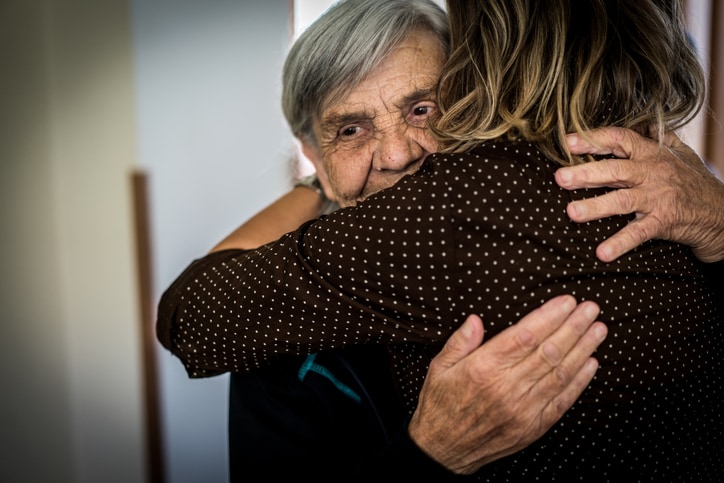With small modifications, the day-to-day life of older relatives and friends can continue within the comfort of their own home and prevent unnecessary nursing home stays.
Here are 5 tips for renovations that will help elderly people stay living at home.
>> Looking for elderly care? Find carers in your area now.
1. Age-appropriate kitchen
Activities such as standing for a long time while cutting vegetables, stooping when washing dishes or emptying the dishwasher can be really exhausting in old age. To preserve the pleasure in cooking and eating the kitchen must be equipped accordingly. For example, install the oven and dishwasher on a raised level so the back does not get injured when using these appliances. Another way to protect the back is to get a height-adjustable worktop. The countertop height can be adapted to a standing or sitting position while providing legroom. Wheelchair use is also possible with these worktops. Similarly, pull-out cabinets can be helpful as kitchen utensils can be easily removed.
You should also consider switching to an induction cooker to eliminate any danger posed when cooking with gas.
2. The bathroom
The first thing to do to make the bathroom age-appropriate is to install a floor-level shower. Combined with non-slip floor mats and doors that open out, the shower can become a much safer place and support restricted movements.
Attention also needs to be paid to the bathroom fixtures. For example, taps that are single lever with swivel spouts can be the easiest to manoeuvre. Rails should also be attached to the walls, especially in the bathtub.
With regards to the toilet, it should have an easily adjustable sitting position and handrails within easy reach. If these are stable and properly attached, they can be a great help.
3. The bedroom
Who doesn’t love falling into bed at the end of a long day? Well, for some older people it can be a laborious experience. To rectify this, you should consider getting an adjustable bed. The adjustability allows for a comfortable entry and exit height so bedtime can remain a relaxing experience. It is also wise to think about installing light switches next to the bed so there is sufficient light for any nocturnal bathroom trips. Be sure to remove any trip hazards, such as rugs, from the bedroom.
4. Handrails and anti-slip coverings
Lift systems and handrails can be instrumental in supporting the general freedom of movement in the home. Depending on the older person’s living conditions and state of health, it may be worth consulting an expert to determine if a stairlift would be beneficial or if handrails are sufficient. Additionally, anti-slip flooring reduces the risk of falls indoors. There should be anti-slip flooring in the bathrooms and kitchen. It is important to keep the floors clear of any potential tripping hazards.
5. Rearrange
In most homes simple rearrangement can be a great method of providing inexpensive support. As mentioned above, rugs or similar trip hazards should be removed or clearly marked. Also, adjusting the lighting can help with poor eyesight. Make sure there is enough light in all occupied areas to reduce tripping hazards. Something to consider is installing lighting with motion detectors.
Conclusion
Declining mobility does not mean that older people must give up their own homes. Strategic home renovations make it possible to cope with everyday life as accident-free as possible.
>> Looking for elderly care? Find carers in your area now.
